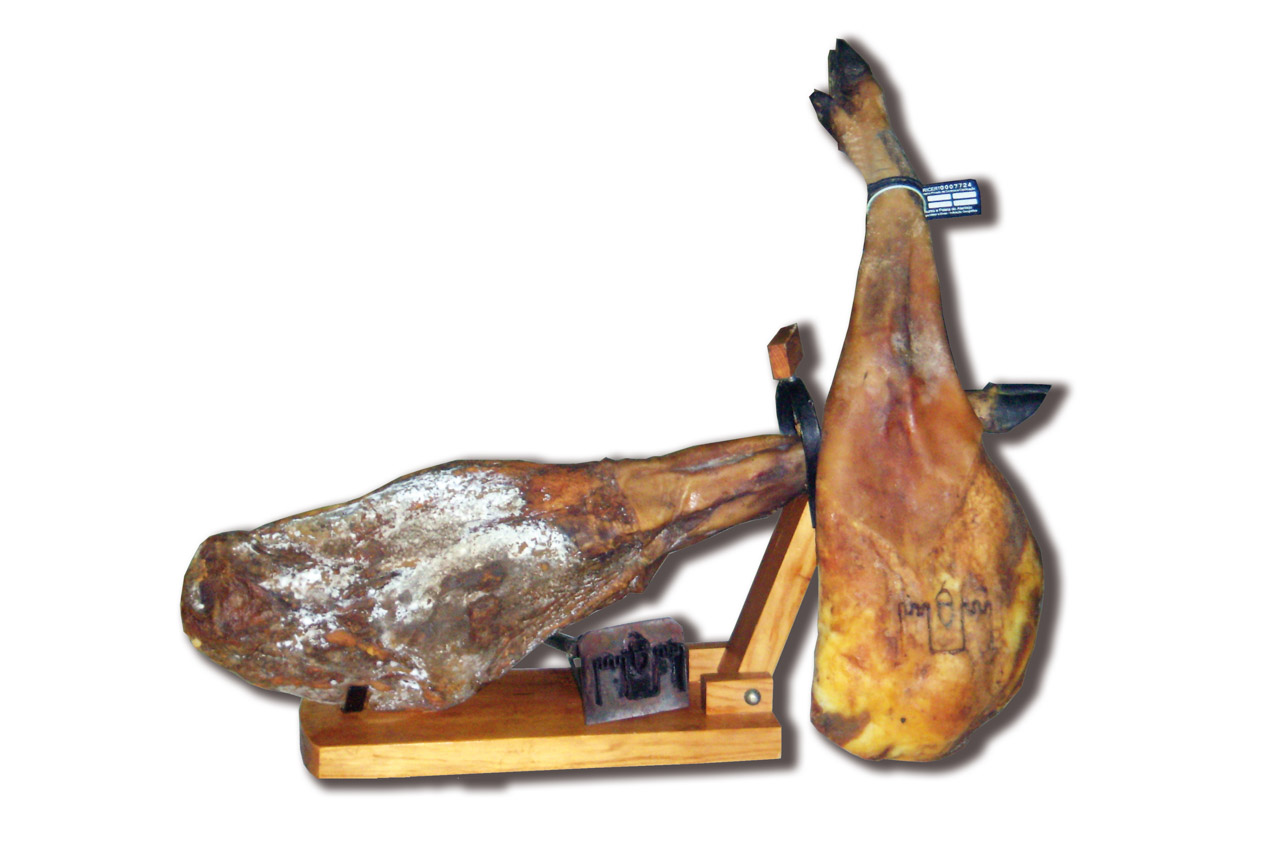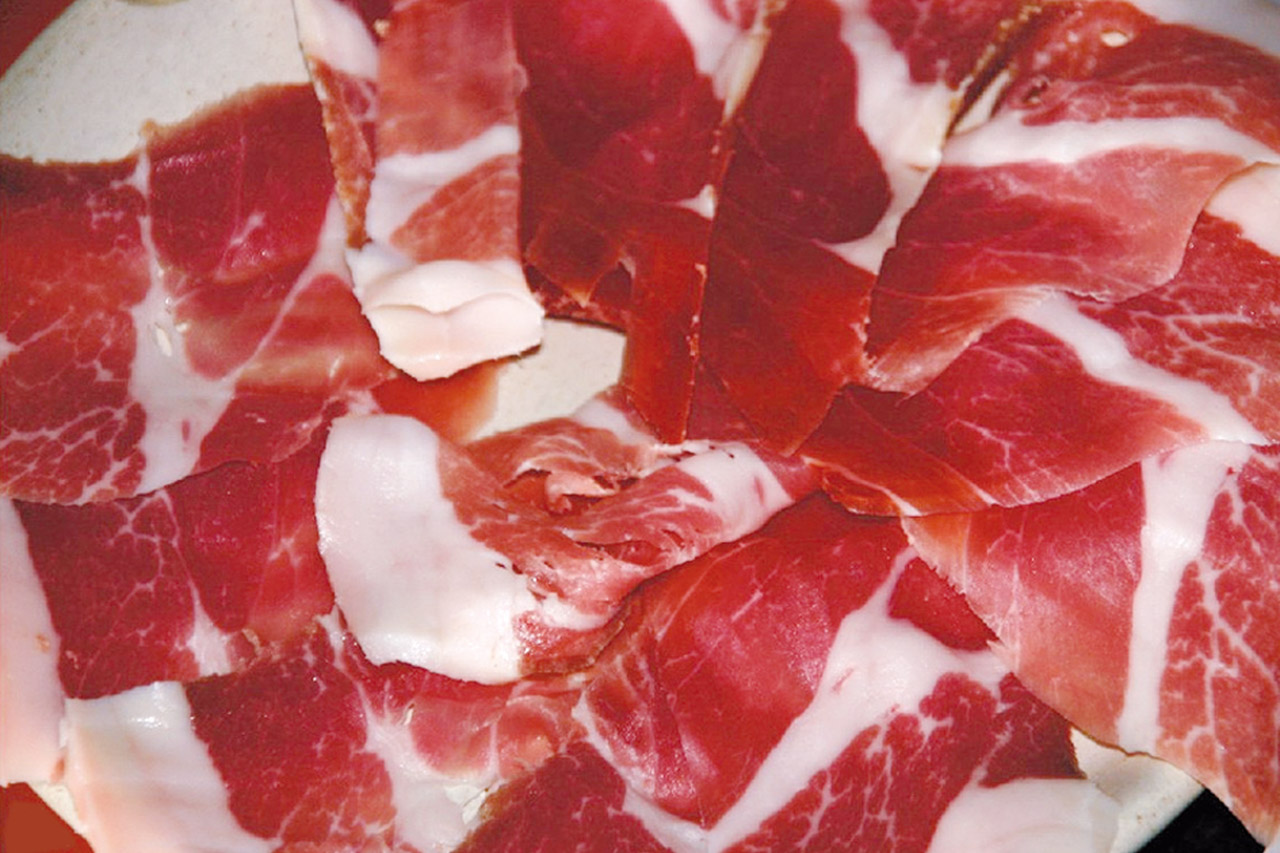Description
The Presunto de Campo Maior e Elvas and Paleta de Campo Maior e Elvas PGI are hams made from the Alentejana breed of pig. Presunto is made with the back legs and Paleta is made with the forelegs. In both cases the pode (trotter) and the rind are kept.
Production Area
Presunto de Campo Maior e Elvas and Paleta de Campo Maior e Elvas PGI are made in the municipal areas of Campo Maior and Elvas, in the Portalegre district.
Production Method
The pigs are raised in the open air and feed on grass, cereals, vegetation, eggs, small mammals and worms etc. After a fattening period of between 60 and 90 days and at an age of between 12 and 24 months and a weight of at least 90 kg, the pigs are butchered. The leg and shoulder have to weigh at least 7.5 kg (with the trotter) and 5 kg respectively. The ham is processed in the local traditional way which is divided into a number of phases: cutting, salting for 15 days at a temperature of less than 5°C; washing and hanging for between one and three days; drying, for 30 days at a temperature of between 3°C and 5°C; curing which takes place in two stages, the first lasts 45 days at a temperature of between 8°C and 12°C and the second lasts 20 days at a temperature of between 12°C and 18°C; lastly the ham is hung for 12 months in natural climatic conditions.
Appearance and Flavour
Presunto de Campo Maior e Elvas and Paleta de Campo Maior e Elvas PGI weigh over 5 kg and over 3.5 kg respectively.
History
The origins of Presunto de Campo Maior e Elvas and Paleta de Campo Maior e Elvas PGI are closely related to the many records linking the importance of the pig in feeding the local population, dating back as far as several centuries before Christ. The conflict between the agricultural farmers and the pig breeders, because of the damage the pigs caused to the crops, has been well documented for over four centuries. Between the end of the 19th century and the beginning of the 20th century pig breeding in the Alto Alentejo area became a major part of the local economy.
Gastronomy
Presunto de Campo Maior e Elvas and Paleta de Campo Maior e Elvas PGI must be stored in a cool dry place and, once sliced must be kept in the fridge; in fact this ham deteriorates very quickly if exposed to the air or to high temperatures. It is normally eaten raw, in very thin slices and served as a starter. The superior flavour of this ham is wasted by cooking. In fact, in the local cuisine, there is not one single dish that includes it as an ingredient. It is excellent with a glass of the local wine. In the past it was kept for important occasions or given as a prestigious gift.
Marketing
This ham is sold as Presunto de Campo Maior e Elvas and Paleta de Campo Maior e Elvas PGI. It is only sold prepacked at source, whole, on or off the bone, in pieces or slices.
Distinctive Features
The area where this ham is made has poor soil, hot dry summers and cold dry winters, it has very little annual rainfall (617mm) and is very exposed to the sun. The flora is resistant to this climate and there is abundant undergrowth in the oak woods. The Alentejana breed of pig is the most suited to these conditions and can be reared outside. This way of breeding and feeding gives the meat its very particular qualities. The climate also lends itself very favourably to the drying and curing of the hams without having to resort to smoking or other means of preservation except for the addition of salt. The logo of the Presunto de Campo Maior e Elvas and Paleta de Campo Maior e Elvas PGI is branded onto the rinds of the hams.






